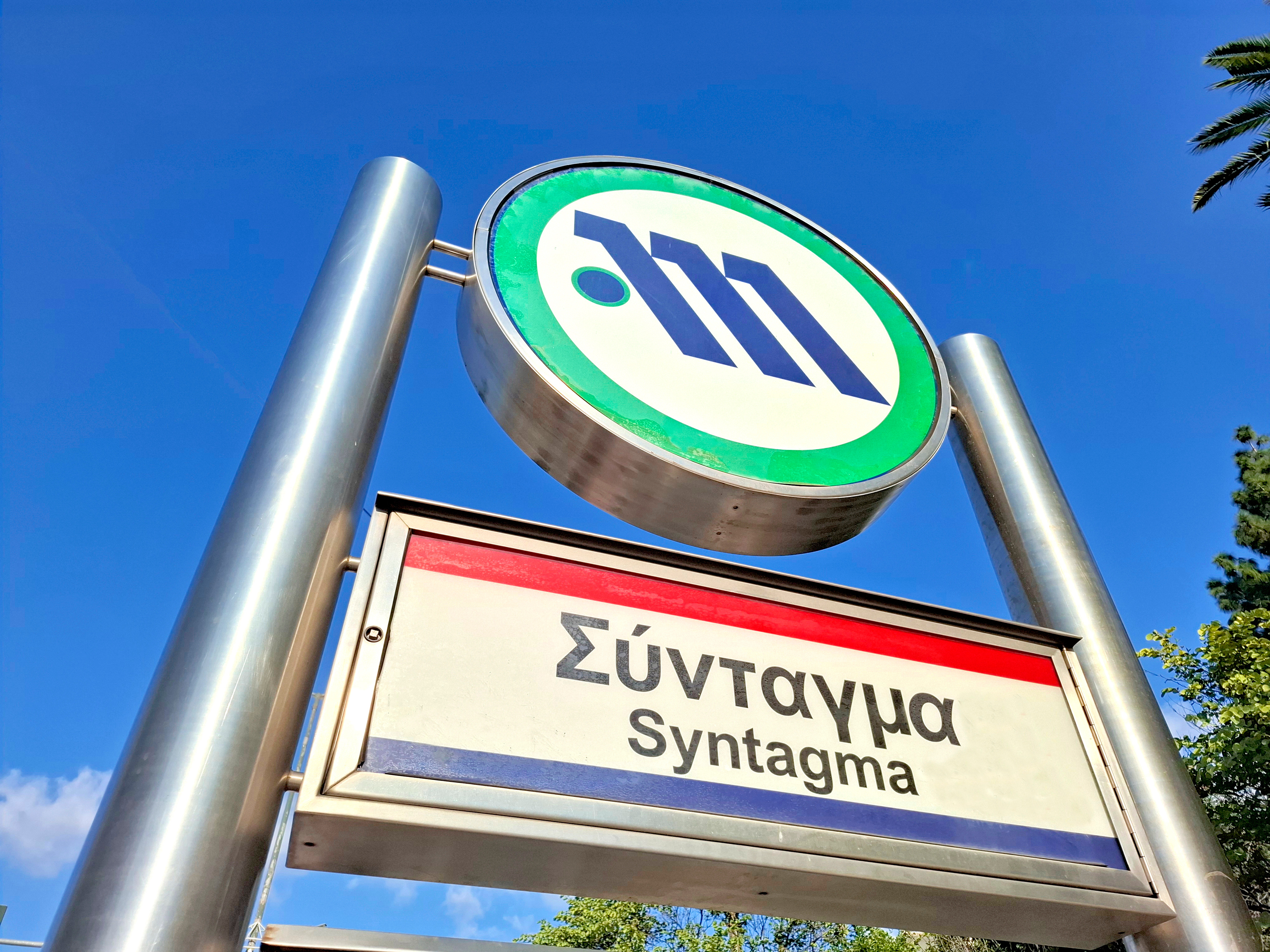Rental Cars

With many unique attractions such as the Parthenon, Santorini, and the Delphi Theater, Greece is a popular travel destination for tourists and business travelers alike. A rental car from Enterprise is a great way to get around Greece to see all its famous landmarks. No matter whether you are on the mainland or one of the world-renowned Greek islands, Enterprise has a convenient location for your trip.
Although we have not tested it, you can also rent a car through uber, or one of the many other car rental companies, with a valid US drivers licence.
Related Links
The Metro

Network and Coverage:
- Three Lines: The Metro system consists of three distinct lines, identifiable by their colors:
- Line 1 (Green): The oldest line, predominantly overground, running from the northern suburb of Kifissia to Piraeus Port.
- Line 2 (Red): An underground line extending from Anthoupoli in the northwest to Elliniko in the south.
- Line 3 (Blue): This underground line serves Athens International Airport, traversing through the city center.
- Extensive Network: The Metro network connects numerous neighborhoods throughout Athens, serving key areas like the Acropolis, Syntagma Square, Monastiraki, and Piraeus Port.
- Interchanges: Interchanges at specific stations allow passengers to seamlessly switch between lines, as well as connect with the Athens Suburban Railway and the Athens Tram.
Reliability:
- Generally Reliable: The Athens Metro is generally considered a modern and reliable transportation system, especially the newer lines (2 and 3).
- Efficient: It provides a fast and efficient way to travel around Athens, helping to alleviate traffic congestion and improve air quality.
- Frequent Service: During peak hours, trains run approximately every 5-6 minutes, ensuring frequent service.
Accessibility and Amenities:
- Accessible: Stations are modern and equipped with escalators, lifts, and ramps to accommodate passengers with mobility challenges.
- Air-conditioned: Most trains are air-conditioned, providing comfortable travel, especially during warmer months.
- Archaeological Exhibits: Many central stations display archaeological artifacts discovered during the Metro's construction, offering a unique blend of transportation and cultural experience.
Operating Hours:
- Daily Operation: The Athens Metro operates daily from approximately 5:30 am to midnight.
- Extended Weekend Hours: On Fridays and Saturdays, Lines 2 and 3 operate until 2:00 am to cater to those enjoying the city's nightlife.
- Future Extensions: A pilot program for 24-hour weekend service is being explored for the future.
Ticketing and Fares:
- Integrated Ticketing: A single ticket is generally valid for use across all modes of public transport in Athens, including the Metro, buses, trolleys, and the Athens Tram.
- Standard Fares:
- Single Ticket: A standard 90-minute single ticket costs €1.20.
- Day Pass: A daily pass is available for unlimited travel within a 24-hour period (excluding airport services).
- 5-Day Ticket: A 5-day ticket allows unlimited travel on all modes of transport (except airport services) for 5 days.
- Airport Tickets:
- Airport Metro: A special ticket is required for travel to and from the airport on the Metro, costing €9.
- 3-Day Tourist Ticket: A 3-day tourist ticket includes unlimited local travel and a round trip to/from the airport.
- Contactless Payment: As of January 15, 2025, you can use your bank card for contactless payment by tapping it on the validation machines at stations and on buses.
- Paper Tickets: Traditional Athena tickets and cards are still available for purchase from machines and ticket booths.
Important Notes:
- Pickpocketing: As in any major city, it's wise to be vigilant and aware of your surroundings to protect your belongings, particularly in crowded stations and trains.
- Airport Train Termination: When traveling to the airport via Metro Line 3, be sure to board a train specifically designated for the airport, as some trains on this line terminate at Doukissis Plakentias Station.
Related Links
Taxi/Uber

Uber in Athens operates differently than in many other cities:
- Uber Taxi only: Uber in Athens exclusively operates through licensed taxis. You won't find the budget-friendly UberX option with private drivers.
- Pricing: Uber Taxi fares are based on the standard taxi rates set by the Ministry of Transport and Communications of Greece. You can see an estimated cost in the app, but the final fare is determined by the taximeter.
- Convenience: Using the Uber app allows you to easily book a taxi, track your ride, and pay online, which can be a significant advantage, especially since not all taxis in Athens accept card payments.
Uber Taxi: Since Uber in Athens works with licensed taxi drivers, safety concerns are minimal. The app provides access to driver and car information for added peace of mind.